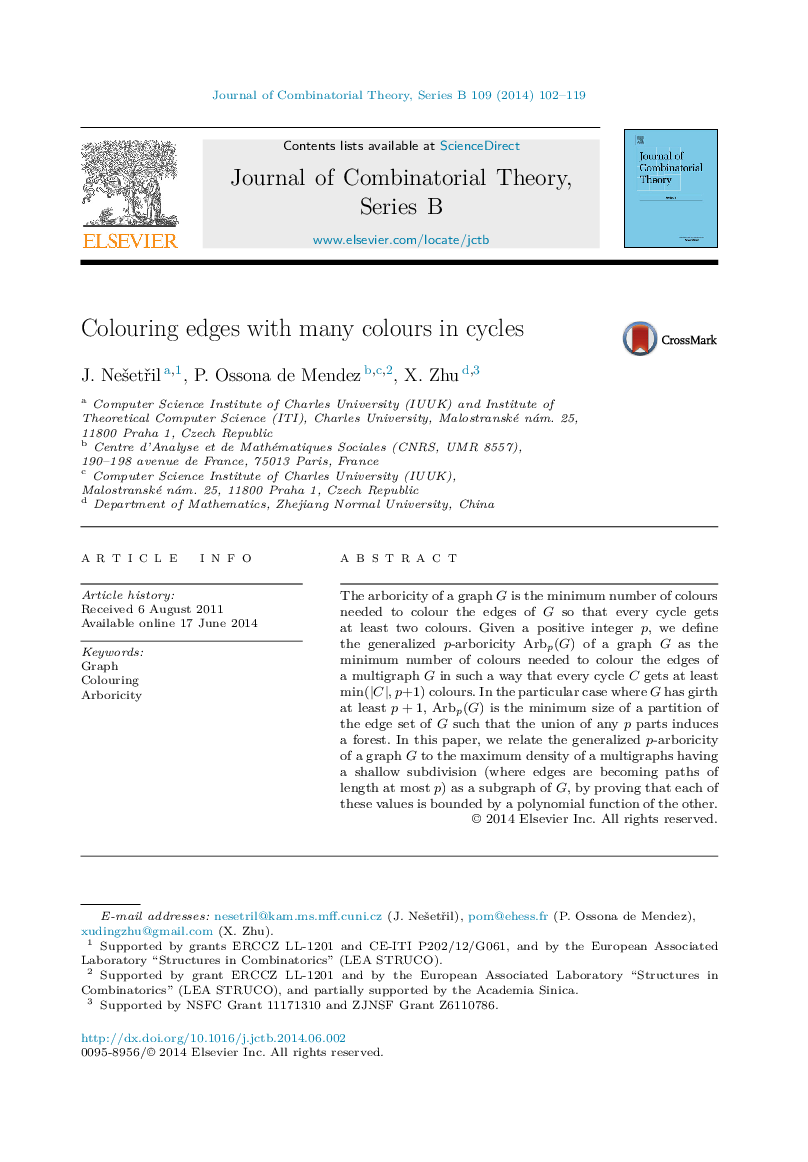| Article ID | Journal | Published Year | Pages | File Type |
|---|---|---|---|---|
| 4656828 | Journal of Combinatorial Theory, Series B | 2014 | 18 Pages |
The arboricity of a graph G is the minimum number of colours needed to colour the edges of G so that every cycle gets at least two colours. Given a positive integer p, we define the generalized p -arboricity Arbp(G)Arbp(G) of a graph G as the minimum number of colours needed to colour the edges of a multigraph G in such a way that every cycle C gets at least min(|C|,p+1)min(|C|,p+1) colours. In the particular case where G has girth at least p+1p+1, Arbp(G)Arbp(G) is the minimum size of a partition of the edge set of G such that the union of any p parts induces a forest. In this paper, we relate the generalized p-arboricity of a graph G to the maximum density of a multigraphs having a shallow subdivision (where edges are becoming paths of length at most p) as a subgraph of G, by proving that each of these values is bounded by a polynomial function of the other.
